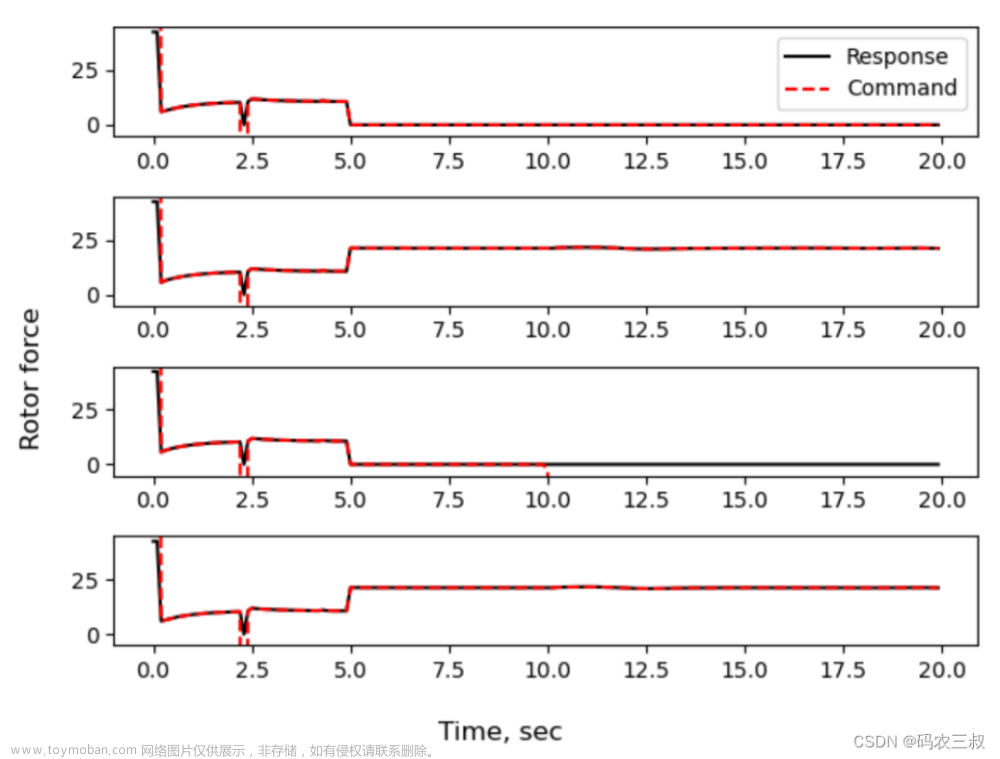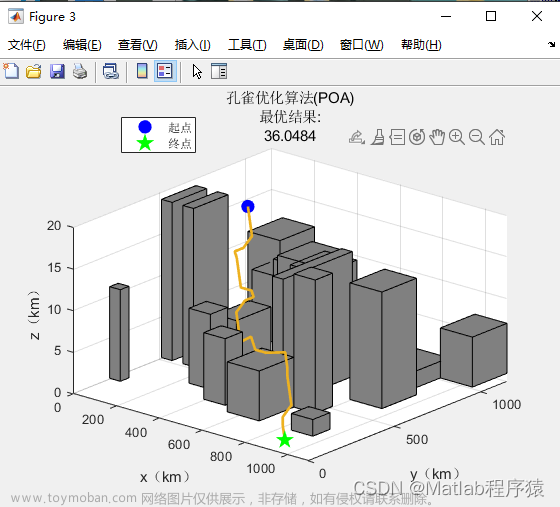💥💥💞💞欢迎来到本博客❤️❤️💥💥
🏆博主优势:🌞🌞🌞博客内容尽量做到思维缜密,逻辑清晰,为了方便读者。
⛳️座右铭:行百里者,半于九十。
📋📋📋本文目录如下:🎁🎁🎁
目录
💥1 概述
📚2 运行结果
🎉3 参考文献
🌈4 Matlab代码&Simulink实现
💥1 概述
摘要:跟踪问题(即如何遵循先前记忆的路径)是移动机器人中最重要的问题之一。根据机器人状态与路径相关的方式,可以制定几种方法。“轨迹跟踪”是最常见的方法,控制器旨在将机器人移动到移动的目标点,就像在实时伺服系统中一样。对于复杂系统或处于扰动或未建模效应下的系统,如 UAV(无人驾驶飞行器),其他跟踪方法可以提供额外的好处。在本文中,考虑路径描述符参数动态的方法(可称为“误差自适应跟踪”)与轨迹跟踪进行了对比。首先提出了跟踪方法的正式描述,表明两种类型的错误自适应跟踪可以在任何系统中与同一控制器一起使用。仿真实验表明,选择合适的跟踪速率可以提高无人机系统的误差收敛性和鲁棒性。结果表明,误差自适应跟踪方法优于轨迹跟踪方法,产生更快、更鲁棒的收敛跟踪,同时在需要时在实现收敛时保持相同的跟踪速率。
原文摘要:
Abstract: The tracking problem (that is, how to follow a previously memorized path) is one of the most important problems in mobile robots. Several methods can be formulated depending on the way the robot state is related to the path. “Trajectory tracking” is the most common method, with the controller aiming to move the robot toward a moving target point, like in a real-time servosystem. In the case of complex systems or systems under perturbations or unmodeled effects, like UAVs (Unmanned Aerial Vehicles), other tracking methods can offer additional benefits. In this paper, methods that consider the dynamics of the path’s descriptor parameter (which can be called “error adaptive tracking”) are contrasted against trajectory tracking. A formal description of tracking methods is first presented, showing that two types of error adaptive tracking can be used with the same controller in any system. Then it is shown that the selection of an appropriate tracking rate improves error convergence and robustness for a UAV system, which is illustrated by simulation experiments. It is concluded that error adaptive tracking methods outperform trajectory tracking’s ones, producing a faster and more robust convergence tracking, while preserving, if required, the same tracking rate when convergence is achieved.
📚2 运行结果









部分代码:
% system parameters
pvtol_constants_global;
% system equations according to Hindman (12):
% output
% x_dot = derivative of [v_x; v_y; omega ; T ; Td; x; y; theta];;
x_dot = [
1/m*(-sin(theta)*T) ; ...
1/m*(-m*g + cos(theta)*T) ; ...
-w_n^2*sin(theta) + k_s*T*sigma2(u_2) ; ...
-k_t*(T - sigma1(T_d)) ; ...
u_1 ; ...
...
v_x ; ...
v_y ; ...
omega ; ...
];
end
%%%%%%%%%%%%%%%%%%%%%%%%%%%%%%%%%
function res_sigma1 = sigma1 (T_d_input)
if (T_d_input<0)
res_sigma1 =0;
elseif (T_d_input>16)
res_sigma1 = 16;
else
res_sigma1 = T_d_input;
end
end
%%%%%%%%%%%%%%%%%%%%%%%%%%%%%%%%%
function res_sigma2 = sigma2 (u_2_input)
if (u_2_input<-1)
res_sigma2 =-1;
elseif (u_2_input>1)
res_sigma2 = 1;
else
res_sigma2 = u_2_input;
end
end
🎉3 参考文献
部分理论来源于网络,如有侵权请联系删除。文章来源:https://www.toymoban.com/news/detail-723021.html
[1]PVTOL is folowing Hauser, J. and Hindman, R. Maneuver regulation from trajectory tracking: Feedback linearizable systems (Proc. IFAC Symp. Nonlinear Contr. Syst. Design, 638-643. Tahoe City, CA, 1995).文章来源地址https://www.toymoban.com/news/detail-723021.html
🌈4 Matlab代码&Simulink实现
到了这里,关于【轨迹跟踪】基于自适应跟踪(EAT)方法的无人机/移动机器人轨迹跟踪(Matlab&Simulink)的文章就介绍完了。如果您还想了解更多内容,请在右上角搜索TOY模板网以前的文章或继续浏览下面的相关文章,希望大家以后多多支持TOY模板网!












